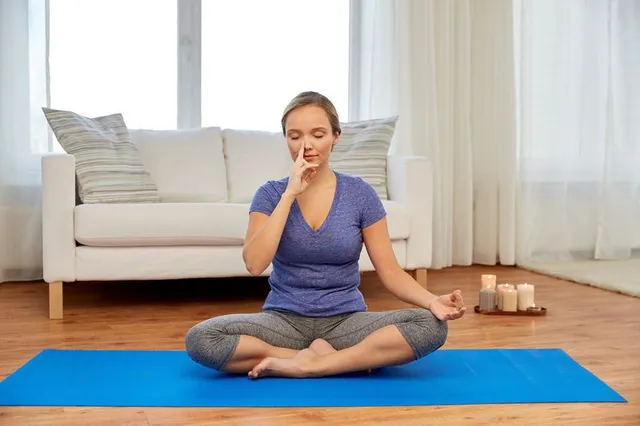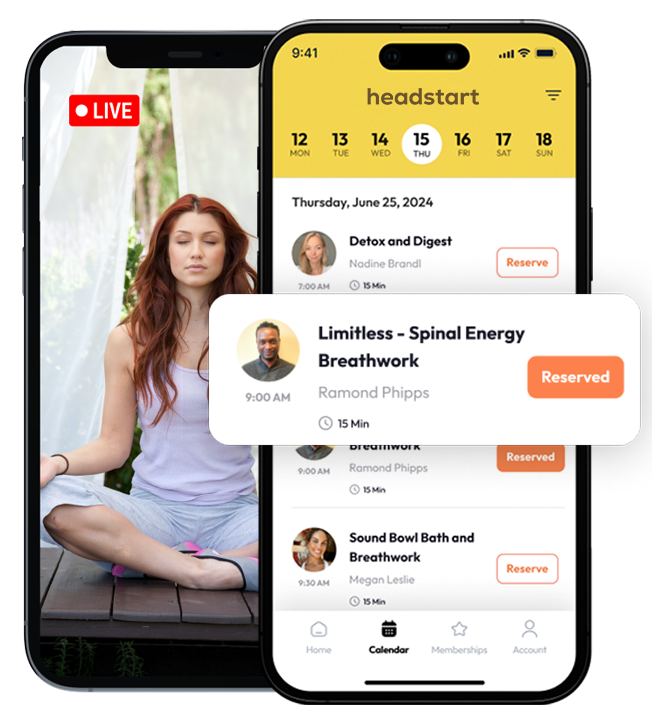Unlock Your Body's Secret Superpower: The Science of Transformative Breathwork
The Power of the Breath
Your breath is your birthright – and your body’s innate pathway to optimal health, clarity, and vitality. But in our fast-paced, high-stress world, most of us have forgotten the power that lies in each inhalation and exhalation.
That’s where breathwork comes in. This ancient practice, backed by modern scientific research, is a game-changer for mind and body.

“[Breathwork] facilitates physical, mental and emotional healing”
~ Mandy DeVries
Respiratory Therapist and Director of Education at the American Association for Respiratory Care (AARC)
The Proven Benefits of Breathwork
Studies show that conscious breathing:
- Activates the parasympathetic nervous system to lower stress hormones, blood pressure, and heart rate. As one study found, just 20 minutes of slow, diaphragmatic breathing per day led to a 25% reduction in cortisol levels (Zaccaro et al., 2018).
- Enhances emotional regulation, improving mental health and well-being. Researchers discovered that breathwork training helped participants manage anxiety and depression more effectively, with lasting positive effects (Perciavalle et al., 2017). Another study linked breathwork to increased feelings of positivity, calmness, and vigor (Telles et al., 2013).
- Boosts cognitive performance and lung function for all-day energy. One study showed that breathwork practitioners demonstrated a 5% increase in lung capacity and a 20% boost in attention and focus (Rossi et al., 2021).
- Regulates the vagus nerve for better sleep, digestion, and immune function. Scientists observed that a regular breathwork routine enhanced heart rate variability, a key indicator of autonomic balance and resilience (Laborde et al., 2018).
In short, breathwork is your gateway to whole-person wellness – no fancy equipment or big price tag required. Our app brings you this research-backed tool, making it easy to experience the benefits every day.
The Scientific Foundation of Breathwork
Breakthroughs in fields like psychophysiology, neuroscience, and integrative medicine have shed new light on the profound impact of breathing practices. Studies show that techniques like diaphragmatic breathing and SKY (Sudarshan Kriya Yoga) activate specific physiological responses for tangible, transformative results.
The science is clear: the secret to thriving isn’t just in our genes or our lifestyle habits. It’s in the very breath that sustains us.
Are you ready to unlock your body’s hidden superpowers?
“Breath is the language of the body. When you consciously change your breath, you consciously change your life.”
~ Richie Bostock,
Best Selling Author and Breathwork teacher
References:
Zaccaro, A., Piarulli, A., Laurino, M., Garbella, E., Menicucci, D., Neri, B., & Gemignani, A. (2018). How Breath-Control Can Change Your Life: A Systematic Review on Psycho-Physiological Correlates of Slow Breathing. Frontiers in human neuroscience, 12, 353. https://doi.org/10.3389/fnhum.2018.00353
Perciavalle, V., Blandini, M., Fecarotta, P., Buscemi, A., Di Corrado, D., Bertolo, L., Fichera, F., & Coco, M. (2017). The role of deep breathing on stress. Neurological sciences : official journal of the Italian Neurological Society and of the Italian Society of Clinical Neurophysiology, 38(3), 451–458. https://doi.org/10.1007/s10072-016-2790-8
Telles, S., Sharma, S. K., Pal, S., & Gupta, R. K. (2013). Alternate-nostril yoga breathing reduced emotional vulnerability as measured by acoustic startle reflex. Psychology & Developing Societies, 25(2), 301-324.
Rossi, A., Cozzolino, V., Marchettini, N., Ninfali, P., Palumbo, G., & Caramia, G. (2021). Effects of Breathwork on Cardio-Respiratory Parameters and Cerebral Oxygenation: A Comparative Study. Metabolites, 11(6), 346. https://doi.org/10.3390/metabo11060346
Pal, G. K., Agarwal, A., Karthik, S., Pal, P., & Nanda, N. (2014). Slow yogic breathing through right and left nostril influences sympathovagal balance, heart rate variability, and cardiovascular risks in young adults. North American journal of medical sciences, 6(3), 145.
Laborde, S., Mosley, E., & Mertgen, A. (2018). Vagal Tank Theory: The Three Rs of Cardiac Vagal Control Functioning – Resting, Reactivity, and Recovery. Frontiers in neuroscience, 12, 458. https://doi.org/10.3389/fnins.2018.00458
Peng, C. K., Mietus, J. E., Liu, Y., Khalsa, G., Douglas, P. S., Benson, H., & Goldberger, A. L. (2004). Exaggerated heart rate oscillations during two meditation techniques. International journal of cardiology, 95(1), 19-27.
Start your breathwork journey with Headstart today.
- 30-Day Free Trial
- 90-Day Money Back Guarantee
- Prices less than $7 a month
- Just 15-mins a day to life changing results
- Only live sessions from top breathwork guides
